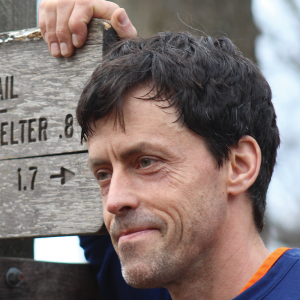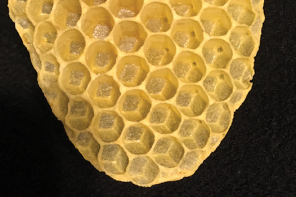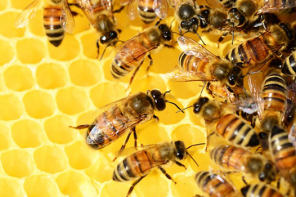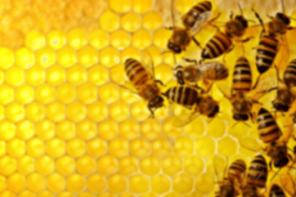By Jay Evans
Snowbirds, Snow, and Supplements Shed Light On Overwintering Success
It is too late for most of us to plan for this Winter, but insights continue to arrive from studies that connect Summer and Fall planning to more and stronger hives in the spring. Previously, I’ve highlighted papers that relied on beekeeper survey responses and various external measurements (weather, local land use) to model colony losses and infer causes (https://beeculture.com/found-in-translation-14/). More such surveys are now out and the scale and details of these surveys are only getting better.
Researchers are also describing ambitious colony, and even habitat, management experiments that strengthen arguments for how best to manage bees for overwintering success, and how to find the best sites for forage and ‘storage’ during dearths. Vincent Ricigliano and colleagues with the USDA-ARS in Tucson, Arizona have provided an important study that documents the impacts of queen replacement and food on winter success (Honey bees overwintering in a southern climate: longitudinal effects of nutrition and queen age on colony-level molecular physiology and performance (2018) Scientific Reports, 8:10475 | DOI:10.1038/s41598-018-28732-z). Importantly, this work is from the Imperial Valley of California. Near the Arizona border, this site is far more southerly than prior studies.If you are reading this article when it comes out in November, that month’s average high temperature in nearby Yuma, Arizona, is 77°F and almost certainly sunny . . . but such is Winter there. Many beekeepers find this climate suits them for feeding bees and building numbers prior to almond pollination.
In the Ricigliano study, starting the season with replacement queens of matched Italian stock had a significant impact on brood production some months later, increasing production by around 25% averaged across all colonies. In addition, adding a mix of Michigan wildflower and California almond pollen to a pollen substitute tended to increase brood production, but not significantly given other factors from the field. Nevertheless, nine colony pairings that were scored in November and January (and split by site and queen replacement) showed higher brood production in the ‘real-pollen’ set while three such pairings showed lower production when pollen was added. Curiously, the three colony measurements that bucked the trend were at just one of three apiaries. In other words, at two of three sites, ‘true’ pollen increased brood production for each of the sampling points. As in every field study to date (or beekeeping operation, for that matter) there was far more variation colony-to-colony than could be explained by the researchers’ manipulations. Two months after colonies were equalized, colonies in each set differed from each other by over 50% in either direction in terms of brood area and this ‘noise’ in the system persisted until the end of the trials. A million dollar question remains why do equalized colonies of the same stock, same management, and same location take such different paths in a couple months?
One way to solve this puzzle is to query the bees themselves to measure the physical state of individual bees. The tool of choice for this currently is to assess the activity levels of key honey bee genes linked to disease resistance, stress and overall robustness. In the Ricigliano study, those genes included immune factors (which increased upon entering ‘Winter’) as well as a family of established markers for honey bee adult development and nutritional status (e.g., vitellogenin, whose many properties are summarized by Miguel Corona and colleagues at http://www.pnas.org/content/104/17/7128). Expression levels of several immune genes and vitellogenin increased as the colonies entered November and December, consistent with a ‘Winter bee’ response, however benign that Winter turned out to be.The authors also describe levels of additional genes in the vitellogenin ‘family’, one of which (vg-like ‘a’) was actually a better predictor of seasonal status than vitellogenin itself. This result alone might help improve the ability of researchers and beekeepers to track the health status of colonies in different conditions and management regimes, perhaps clearing up some of the colony noise.
Another way to separate truth from noise is by brute force. When thousands upon thousands of colonies are tracked, individual factors that help colonies fail or prosper should emerge. I have reviewed before important efforts by both the USDA National Agricultural Statistics Service (https://www.nass.usda.gov/Surveys/Guide_to_NASS_Surveys/Bee_and_Honey/) and the Bee Informed Partnership (https://beeinformed.org/programs/management-surveys/) to identify signals in the noise of bee colonies. There is now an equally ambitious study from Austria to add to the mix. Austrians are dogged in registering and tracking their colonies and much else about the environment, and this has led to numerous insights into the impacts of climate, disease, management and stress on Austrian bee colonies. In the most recent study, Sabrina Kuchling and colleagues analyzed data from 129,428 colonies tracked over six years (Investigating the role of landscape composition on honey bee colony winter mortality: A long-term analysis, Scientific Reports (2018) 8:12263 | DOI:10.1038/s41598-018-30891-y). Colony operations ranged from one or a few hives to 580 hives (one of the country’s largest beekeepers). In this study, smaller operations fared better in terms of overwinter losses than larger operations, with a tipping point somewhere above 60 colonies. In addition, the landscape around apiaries played a significant role. One other nugget was that stress factors linked to colony losses were most clear in years that were bad overall. In other words, stresses placed on bees by habitat, climate and disease were additive, eventually pushing more colonies off more ledges. Despite this huge effort, noise persisted in terms of unpredicted anomalies (interactions) including factors that are good predictors of colony loss one year but poor or opposite predictors the next. To this end the authors conclude their extraordinary effort with a humbling “It also indicates that conclusions drawn from analyses of a single Winter should be interpreted with great caution, and further long-term studies are needed to understand honey bee colony losses.” Knowing the minds of scientists, and competition for a breakthrough moment, this is not just a plea for more funding but an honest appraisal that, despite a few solid truths (disease=bad, stress=bad, forage=good) we are attempting to manage a social organism that is affected by rules we do not yet fully understand.
Jay Evans is the Research Leader for the USDA Honey Bee Lab in Beltsville, MD.











